wikiHow is a “wiki,” similar to Wikipedia, which means that many of our articles are co-written by multiple authors. To create this article, 13 people, some anonymous, worked to edit and improve it over time.
The wikiHow Culinary Team also followed the article's instructions and verified that they work.
This article has been viewed 418,382 times.
Learn more...
Chickpeas, also referred to as garbanzo beans, are usually boiled, though they can also be prepared in the slow cooker or oven. They are very versatile, having almost no flavor and so presenting a "blank canvas to color" with flavors and spices to your liking, along with many possibilities of what to use them for, including hummus dip, as a garnish for a salad, in soups, etc.
Ingredients
Makes 2 lbs (900 g) cooked chickpeas
- 1 lb (450 g) dried chickpeas/garbanzo beans
- 1 Tbsp (15 ml) baking soda
- Water
- Salt (optional)
Makes 2 lbs (900 g) cooked chickpeas
- 1 lb (450 g) dried chickpeas
- 7 cups (1750 ml) water
- 1/4 tsp (1.25 ml) baking soda
- 1 tsp (5 ml) salt (optional)
Makes 2 servings
- 15-oz (420-g) can chickpeas
- 1 1/2 Tbsp (22.5 ml) olive oil
- 1/2 tsp (2.5 ml) salt
- 1/4 tsp (1.25 ml) garlic powder (optional)
Steps
Boiled Chickpeas
-
1Cover the chickpeas in cold water. Place the chickpeas in a large saucepan or stockpot and pour cold water over them. The water should cover the chickpeas by 3 to 4 inches (7.6 to 10 cm).
- As the chickpeas absorb the water, you may need to add more. In fact, chickpeas can nearly double in size, so you may end up needing twice as much water as you have chickpeas.
- Soaking is important for two main reasons. First, soaking dried chickpeas softens them, thereby cutting down the amount of time they need to cook. Second, the soaking process breaks down many of the gas-inducing sugars in the beans, thereby making them easier to digest.
-
2Add baking soda. Stir 1 Tbsp (15 ml) of baking soda into the water until it dissolves.
- Baking soda is not strictly necessary, but it can be beneficial. The molecules in baking soda attach themselves to gas-inducing sugars in the chickpeas known as oligosaccharides. By binding to these sugars, baking soda can break them down and partially remove that gut felt odorous, gas producer from the structure of the chickpea.
- On the other hand, baking soda can leave behind a salty, soapy flavor in large amounts, so if you decide to use it, you should only use a little.
Advertisement -
3Soak overnight. The chickpeas should soak in the cold water for at least 8 hours.
- Cover the pot of chickpeas with a clean dish towel or lid as they soak. You can leave them out at room temperature; refrigeration is not needed.
-
4Alternatively, quick soak the chickpeas. If you only have an hour or so to work with, you can soak the chickpeas faster by rapidly boiling the beans in a stockpot of hot water.[1]
- Place the chickpeas in a stockpot or large saucepan and cover with 3 to 4 inches (7.6 to 10 cm) of water.
- Bring the contents of the pot to a boil over high heat on the stove. Let them continue boiling rapidly for 5 minutes, with baking soda included.
- Remove the pot of chickpeas from the heat, cover loosely, and let the chickpeas soak in the hot water for a full 1 hour.
-
5Drain and rinse the chickpeas. Pour the water and chickpeas through a strainer to separate them. Rinse the chickpeas for 30 to 60 seconds under running water while in the strainer, gently sifting them so that all the chickpeas get washed with the water.
- Any dirt or debris in the soaking water can adhere to the chickpea skin as the chickpeas soak, so it is important to drain the water and rinse the chickpeas well. The sugars that broke down into the water can still cling to the sides of the chickpeas, too, which is another important reason to dump the water and rinse the beans.
- Rinsing the chickpeas can also help remove the aftertaste left behind by baking soda.
-
6Cover the chickpeas with fresh water in a large saucepan. Transfer the chickpeas to a clean saucepan or stockpot and fill the pan with enough water to cover the beans.
- If you want to make the beans more flavorful, add about 1/4 tsp (1.25 ml) of salt to the contents of the saucepan for every 2 qt (2 L) of water used. The beans can draw the salt in as they cook, thereby flavoring the inside of the chickpea as well as the outside.
- As a general guideline, use about 1 qt (1 L) of water for every 1 cup (250 ml) of soaked beans.
-
7Simmer the chickpeas until softened: by setting the saucepan on your stove and bringing it to a boil over medium-high heat. Then reducing the heat to medium or medium-low, until the water simmers, then simmering in water for 1 to 2 hours.
- For dishes that require firm beans, like stews and soups, only cook the beans for about 1 hour. For dishes that require softer beans, like hummus, cook for about 1 1/2 to 2 hours.
-
8Drain, rinse, and use as desired. Once finished, pour the chickpeas and water through a strainer and rinse the beans, still inside the strainer, under running water for 30 to 60 seconds. Serve immediately, add to a recipe calling for chickpeas, or save for another time.
Slow Cooker Chickpeas
-
1Rinse and drain the chickpeas. Place the chickpeas in a strainer and rinse them for 30 to 60 seconds under cold running water.
- By rinsing the chickpeas now, you clean off any surface debris or dirt clinging to the dried beans. This is also a good chance to pick out any small stones or dark brown chickpeas that accidentally got mixed into the batch.
-
2Place the ingredients in a small slow cooker. Combine the water, chickpeas, and baking soda in a 2 1/2 qt (2.5 L) slow cooker, stirring slightly to make sure that the baking soda is evenly dispersed and that the chickpeas are all submerged under the water.
- Note that a pre-soaking is not needed when you cook the chickpeas in a slow cooker. Since the chickpeas will cook so slowly, they do not need to be softened beforehand.
- The use of baking soda is still recommended, however. Since you are skipping the pre-soaking step here, the sugars do not have the same opportunity to break down as they do with the traditional boiling method. The use of baking soda, which helps break apart gas-inducing sugars, can make the chickpeas a bit easier to digest once finished.
- If you decide not to use the baking soda, you can add 1 tsp (5 ml) of salt to the water, instead. The salt will not break apart the sugar, but it will add more flavor to the chickpeas, which will absorb the grains of salt as they take in water. As a result, the inside of the chickpeas will be seasoned as well as the outside.
-
3
-
4Drain and rinse well. Dump the contents of the slow cooker into a strainer to separate the water from the beans. Rinse the beans, still inside the strainer, under running water for 30 to 60 seconds.
- The water the beans cooked in can contain a lot of dirt and stripped sugars, so it needs to be dumped out. The chickpeas must also be rinsed since some of the debris in the water can end up clinging to the surface of the chickpeas.
-
5Serve or use as desired. You can use the chickpeas immediately, add them to a recipe calling for the bean, or save them for another time. Any recipe that calls for boiled chickpeas can use slow cooker chickpeas, though.
- Note that slow cooked chickpeas tend to be very tender, so you might be better off using them in a recipe that calls for soft, tender chickpeas rather than one requiring firmer beans.
Roasted Precooked Chickpeas
-
1Preheat the oven to 400 degrees Fahrenheit (200 degrees Celsius). Prepare a baking sheet by spraying it with nonstick cooking spray.
- You could also grease the baking sheet with shortening or cover it with a layer of aluminum foil or parchment paper.
-
2Drain and rinse the canned chickpeas. Pour the contents of the can through a strainer to separate out the liquid. Rinse the chickpeas, still in the strainer, under running water for 30 to 60 seconds.
- You could also drain the liquid from the beans using the lid of the can. Partially crack the lid open just enough so that liquid can escape but chickpeas cannot. Tip the can over a sink and let the liquid drain out through this gap. Drain out as much liquid as possible before opening the lid all the way.
- You can also add water to the drained can and swish it around to help rinse the beans. Place the lid over the can so that there is a small gap and pour out the rinsing water through this gap. Note, however, that proper rinsing through a strainer is still the recommended method.
-
3Gently remove the skins from the chickpeas. Lay the chickpeas out in between two layers of clean paper towels. Gently roll the chickpeas around with the top paper towel to remove any remaining, excess water and to peel off loose skins.
- Be careful as you press on the chickpeas, however, since you do not want to accidentally crush them by using too much force.
-
4Toss the chickpeas in olive oil. Dump the chickpeas into a medium mixing bowl and drizzle the olive oil over them. Gently toss the chickpeas around with a mixing spoon or clean hands to coat them all in the oil.
- The oil will add flavor to the chickpeas, but it will also help them to develop a pleasant color and texture while roasting in the oven.
-
5Spread the chickpeas out onto the prepared baking sheet. Transfer the coated chickpeas to the baking sheet, spreading them out in a single, even layer.
- Make sure that the chickpeas are kept in a single layer. The beans need equal exposure to the heating elements in order to cook evenly.
-
6Roast until golden brown and crunchy. This should take about 30 to 40 minutes in your preheated oven.[4]
- Pay close attention to the chickpeas as they cook so that you can remove them if they appear to be burning.
-
7Season as desired and enjoy. Sprinkle the salt and garlic powder over the toasted chickpeas and toss them gently with a flat spatula to coat evenly. Serve and enjoy as a healthy snack.
- You can experiment with other spices and spice mixes, as well. For instance, you can season the chickpeas with paprika, chile powder, curry powder, garam masala, or even cinnamon.
Community Q&A
-
QuestionDo I need to cook canned chickpeas?
 Community AnswerNo. Canned chickpeas have been soaked and cooked before canning and are ready for immediate use. Toss them on a salad, or in a food processor, with some olive oil and tahini to make hummus.
Community AnswerNo. Canned chickpeas have been soaked and cooked before canning and are ready for immediate use. Toss them on a salad, or in a food processor, with some olive oil and tahini to make hummus.
Things You'll Need
Boiled Chickpeas
- Large saucepan or stockpot
- Dish towel
- Strainer
Slow Cooker Chickpeas
- Strainer
- 2 1/2 qt (2.5 L) slow cooker
Roasted Chickpeas
- Can opener
- Strainer
- Baking sheet
- Clean paper towels
- Nonstick cooking spray
- Spatula
References
- ↑ http://theshiksa.com/2012/10/24/how-to-soak-and-cook-chickpeas/
- ↑ http://www.foodnetwork.com/recipes/alton-brown/slow-cooker-chickpeas-recipe/index.html
- ↑ http://thehealthyeatingsite.com/how-to-cook-chickpeas-in-a-slow-cooker/
- ↑ http://www.steamykitchen.com/10725-crispy-roasted-chickpeas-garbanzo-beans.html
- ↑ https://www.sharecare.com/videos/Chickpeas-at-Lunch-Can-Beat-the-Afternoon-Munchies-1833055621001-1826566344001/?eid=1010691838&memberid=32749748&_sid=49edc2fc-7a63-4831-a4d3-8a5b3e4d8abe&#cmpid=sceml00 Dr. Robin Miller, Sharecare Medical Advisor
About This Article
Boiling is the most common way to cook chickpeas. Pour dried chickpeas into a large saucepan or stockpot and cover them with about 3-4 inches (7.6-10 cm) of cold water. Stir in 1 tbsp (15 mL) of baking soda. Then, cover the pot with a lid or clean dish towel and let the chickpeas soak overnight. Since the peas will absorb a lot of water, check on them after a few hours and add more water if the level starts to drop too low. Drain and rinse the chickpeas, then transfer them to a clean pot and fill it with enough water to cover the peas. Add about ¼ teaspoon (1.4 g) of salt for every 2 qt (2 L) of water you use. Bring the water to a boil over medium-high heat, then turn the heat down to medium-low and let the peas simmer for 1-2 hours until they are soft. Drain the peas and rinse them under running water for 30 to 60 seconds. Season the peas to taste and serve them as a side dish, or incorporate them into your favorite recipe that calls for chickpeas. For tips on how to cook chickpeas in a slow cooker, read on!
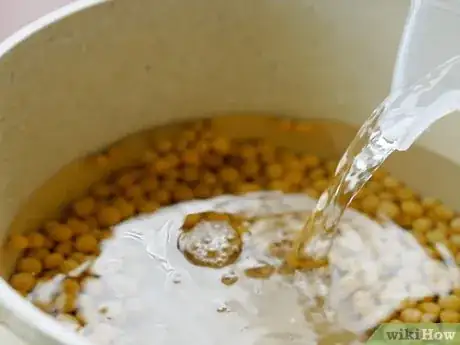
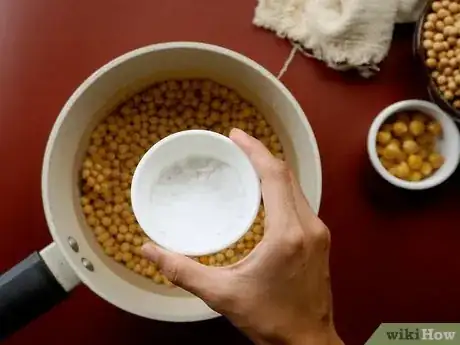
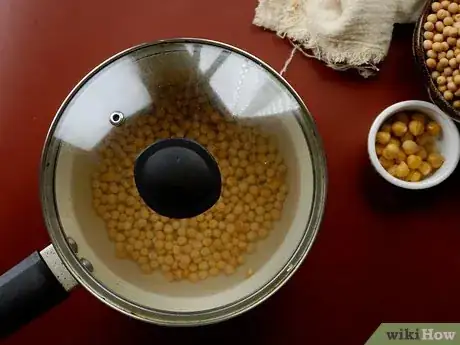
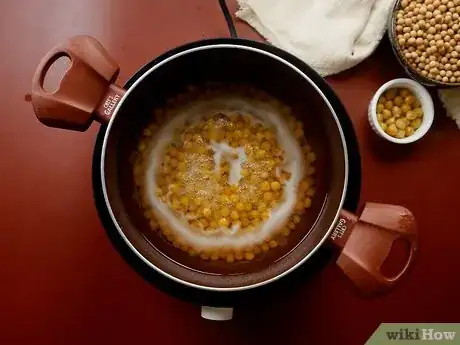
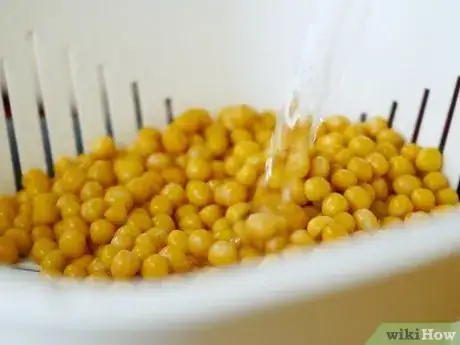
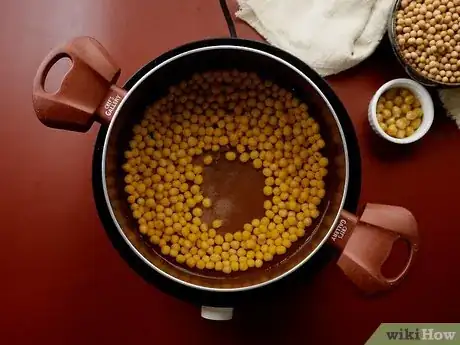
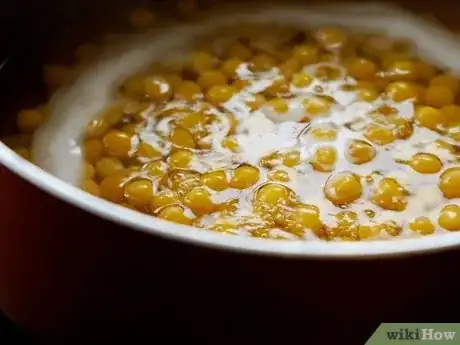
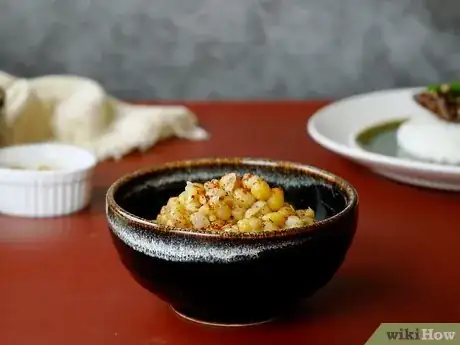
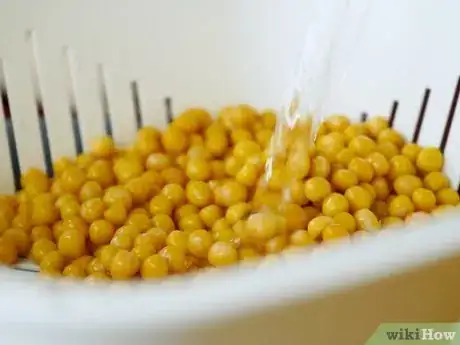
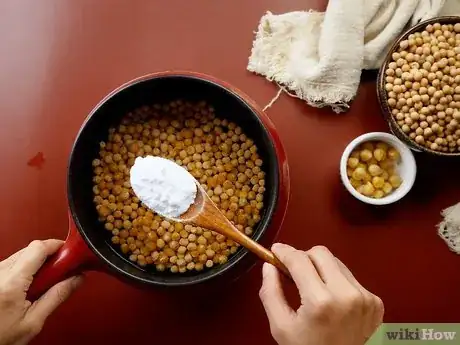
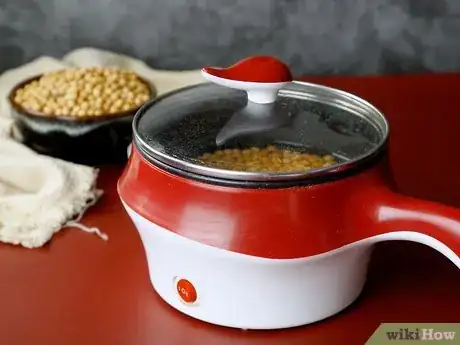
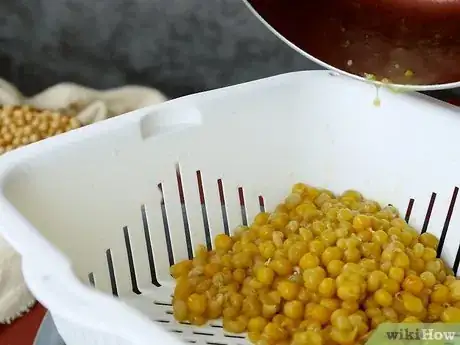
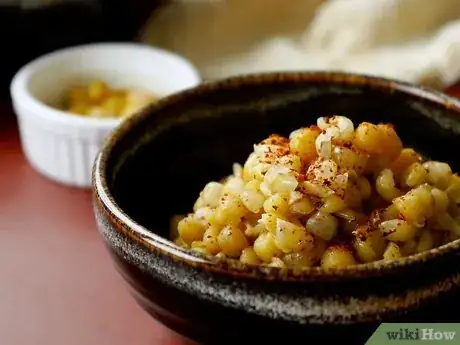
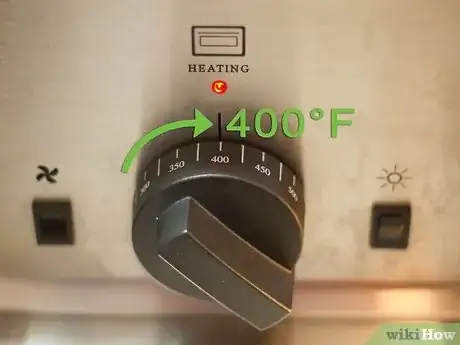
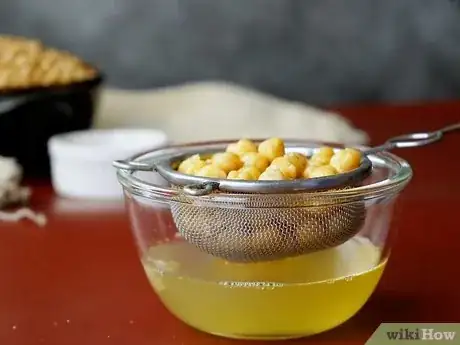


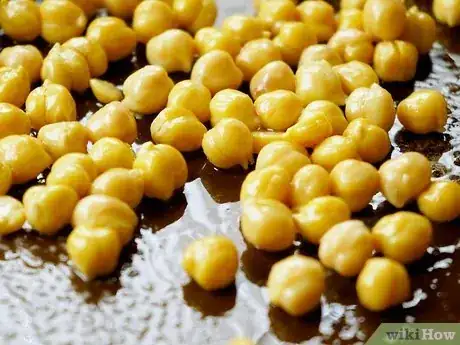
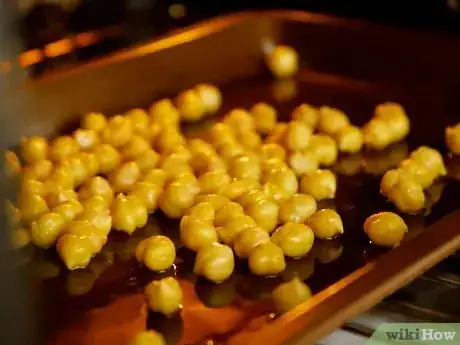
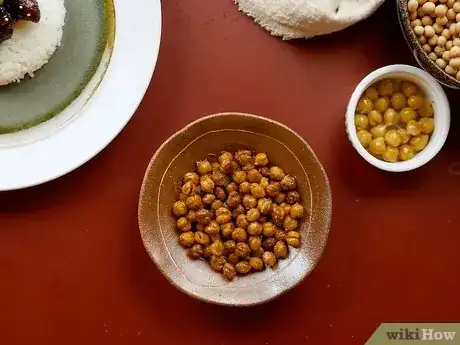

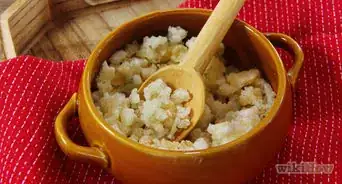
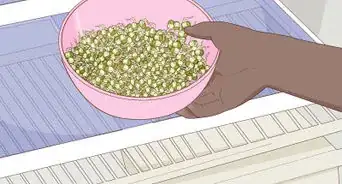










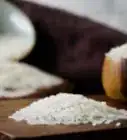

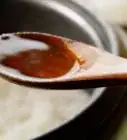




































Medical Disclaimer
The content of this article is not intended to be a substitute for professional medical advice, examination, diagnosis, or treatment. You should always contact your doctor or other qualified healthcare professional before starting, changing, or stopping any kind of health treatment.
Read More...